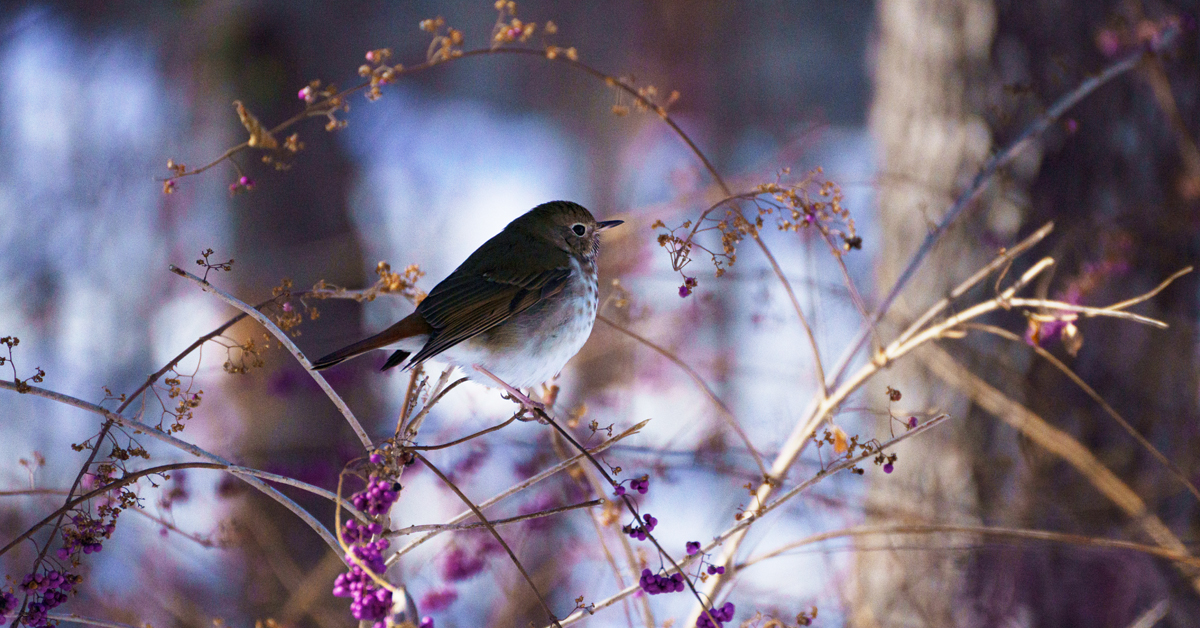
A hermit thrush perched on an American beautyberry, spotted at the Edith J. Carrier Arboretum and Botanical Gardens VBWT site.
By Blogger Meg Raynes
Photos by Meg Raynes
Hi there! My name is Meg, and I will be your co-guide to the Virginia Bird and Wildlife Trail this year through a series of blogs on the website of the Virginia Department of Wildlife Resources (DWR). What is the Virginia Bird and Wildlife Trail (VBWT), you ask? I am happy to share! The VBWT is a collection of locations throughout the state of Virginia ideal for birding and wildlife viewing. Have you ever been driving down the road and passed by one of those little, brown signs that says, “Bird and Wildlife Trail”? Follow one and you will find yourself at a VBWT site.
The very first site I visited was Grand Caverns Regional Park in Grottoes, near Harrisonburg, which is part of the Lost Shoe Loop in the Mountain Region. (The VBWT sites are organized into three regions—Mountain, Piedmont, and Coastal—each containing multiple clusters of sites, called “loops,” to help you plan your explorations in a given area.) I will admit that on my first visit to “the caverns,” as locals call it, I was not purposely searching for a VBWT trail. I worked there for a few summers during high school. Not only does this park feature Grand Caverns, the oldest show cave in the United States, but it is also home to the lesser-known Fountain Cave.
The path to Fountain Cave is moderate, beginning with a steep grade up the hill, and can be found slightly to the right of the stone lodge. Follow this trail to find the entrance to Fountain Cave along with gorgeous mountain views. As you enter the park, you will cross a bridge over the South River. Following the road, you pass several picnic shelters, a playground, mini-golf course, and pool, taking you to the stone lodge where you can purchase tickets for cave tours. One of my favorite parts of this park is the trail that covers the perimeter, where you can easily take in the sights along the South River. If you visit during the spring, you will be treated to a vibrant blanket of Virginia bluebell blossoms.
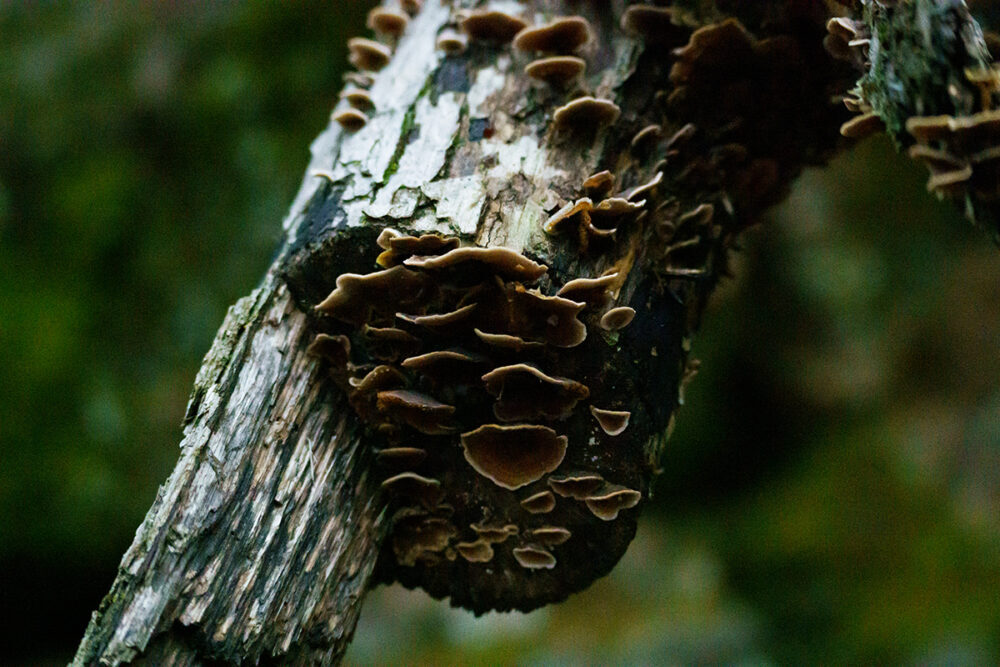
The common Virginia black bear has been known to visit locations at Grand Caverns where forgetful humans provide picnic leftovers. (Please remember to pack out what you pack in!) And, of course, how can you have a cave without any bats? During my time as a tour guide, bats were not plentiful in the caves, but they were present and seen flitting through the dark chambers from time to time.
Next on my close-to-home list is the Edith J. Carrier Arboretum and Botanical Gardens, found on the James Madison University Campus and another trail on the Lost Shoe Loop. Being a graduate of JMU, you might guess that I discovered this location during my time as an undergraduate. I did not visit, however, until the day of graduation when I was taking photos in my purple and gold cap and gown. After graduation, I returned to the arboretum many times before work shifts to clear my mind. Over time, I learned of the many programs offered there. I have attended a professor lecture about experiencing dark skies, a wildflower walk where I learned that redbud flowers are edible (Use caution identifying plants as safe before ingesting!), and recently enjoyed the company of a couple of young deer along the John Clayton Trail.
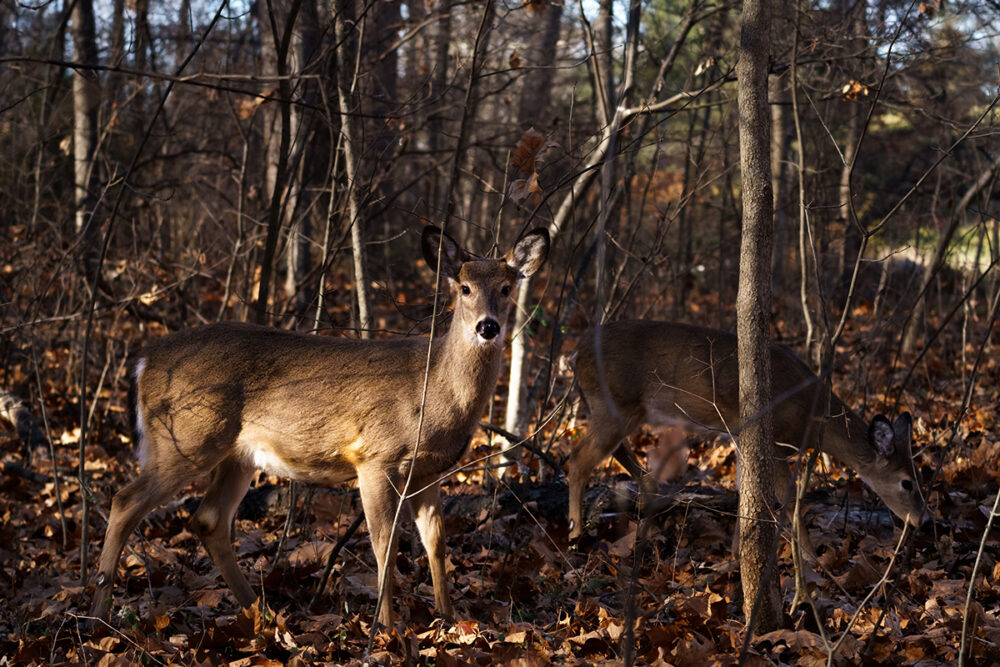
Some deer spotted at the Edith J. Carrier Arboretum and Botanical Gardens.
The Edith J. Carrier Arboretum is home to lots of different members of flora and fauna. On my latest trip, the trees past the labyrinth, located on the Southwest side, were alive with barking squirrels scurrying up and down. One of these playful critters took me on a quick adventure through the snow as I snapped photos down a tree, across a log, up a tree, eventually leaving this little one to enjoy the snack he or she had carefully stored away.
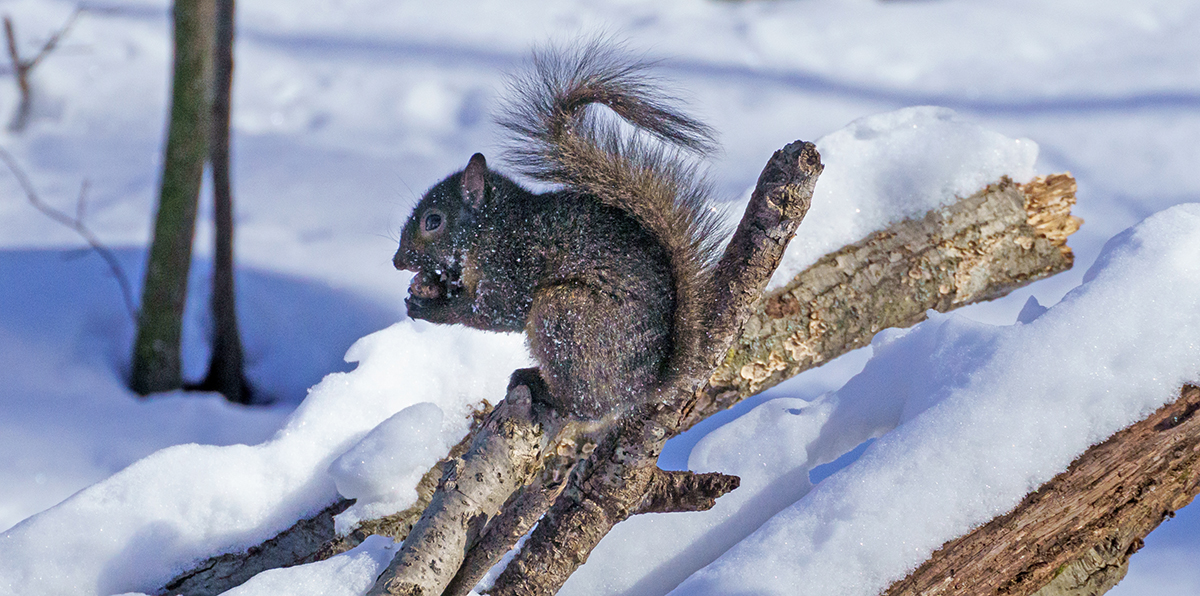
The Eastern gray squirrel with its snack.

A Carolina chickadee spotted at the Edith J. Carrier Arboretum and Botanical Gardens.
Our final stop for today’s blog post is Silver Lake in Dayton. This location is on the North River Loop, categorized under the Mountain Region of the VBWT along with the Lost Shoe Loop. I discovered Silver Lake after moving to the area a few years ago. The lake is located just beside the road with plenty of space available for parking. Accompanying the lake is the Silver Lake Mill, built in 1822, and if you look into the distance past the lake’s North side you will notice Mole Hill—one of the youngest volcanoes in the Eastern United States. On my most recent trip to the lake, I found it hidden under a layer of steam fog. I recall that morning beginning at 8° with temperatures remaining below freezing all day. Even though my numb toes repeatedly told me to return to the comfort of my perfectly heated vehicle, my mind echoed to the childish tune of just-five-more-minutes.
I no longer live close enough to comfortably walk to Silver Lake, but that does not stop me from making the time to visit. I have heard stories of trumpeter and tundra swan sightings, though the most exciting wildlife I have witnessed there was a muskrat.
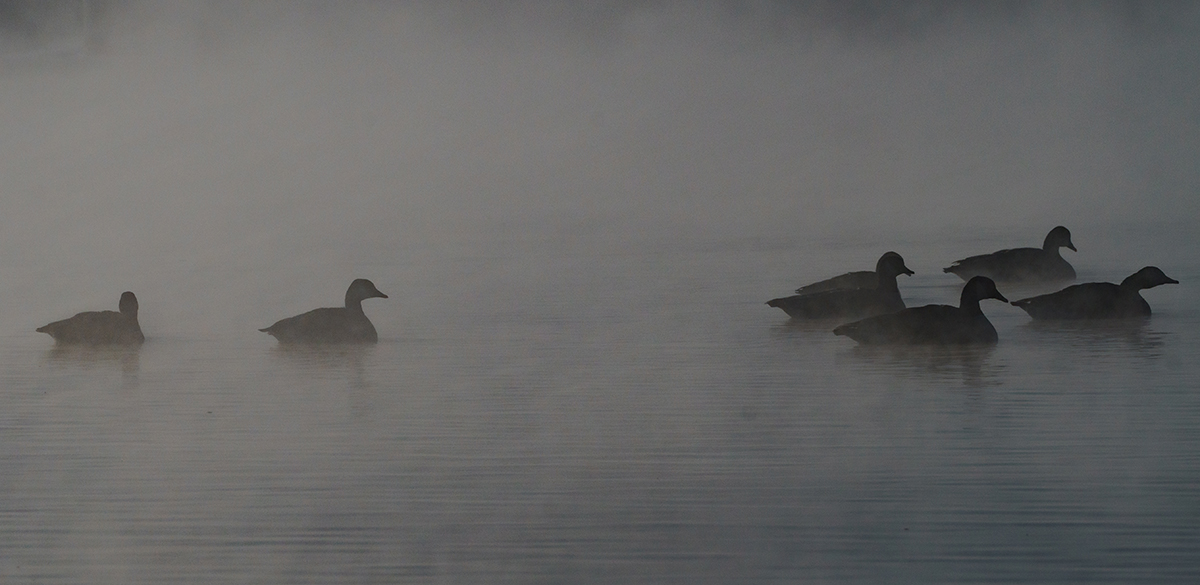
Canada geese on a foggy Silver Lake.
You can tell by now that my time in these parts of the VBWT did not begin with intention. Like so many others, I did not know much about the many outdoor-based resources in Virginia. Part of me wishes I had known sooner and another part of me is glad I am able to better appreciate these natural areas as an adult, though I remain a child at heart. My time spent in nature is a collection of moments spent studying small details, and hopefully catching a glimpse of local wildlife. I am here as your co-guide to help you, too, discover the hidden gems that lie in the corners and pockets of Virginia that you have driven past. Whether you are in search of peace in nature, more time spent with loved ones outside, interesting natural formations, wildlife sightings, or a simple break from the daily routine of busy life, you need not look much further than your own backyard.
Explore the Wild with Meg Raynes
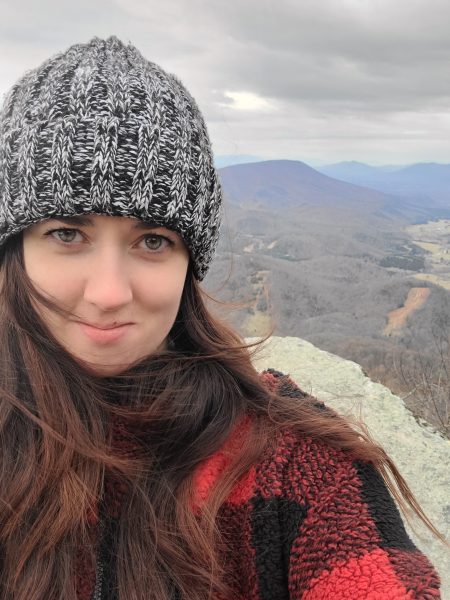
Meg Raynes is a hiker, traveler, photographer, and teacher.
If you would like to follow along as she explores the Virginia Bird and Wildlife Trail, then make sure to subscribe to DWR’s Notes From the Field newsletter.
You can see more of Meg’s plant and animal observations during her adventures by following her on iNaturalist.
Follow Meg on Instagram @meg.does.a.hike to see all of her wonderful photography.


